Foods like hardtack, pemmican, and jerky have been popular survival food for many years. As well as a great everyday treat, jerky has a long shelf life, which makes it the perfect thing to prep and pack in your doomsday kit. There are many different types of jerky, and here we will look at how to make some and why this food is superb in a survival situation.
How To Make Jerky?
Beef jerky is such a brilliant survival food because it has a long shelf life and contains a high level of protein as well. Below are all the steps and a guide to what you will need to make your own beef jerky, just like you would get from the grocery store.
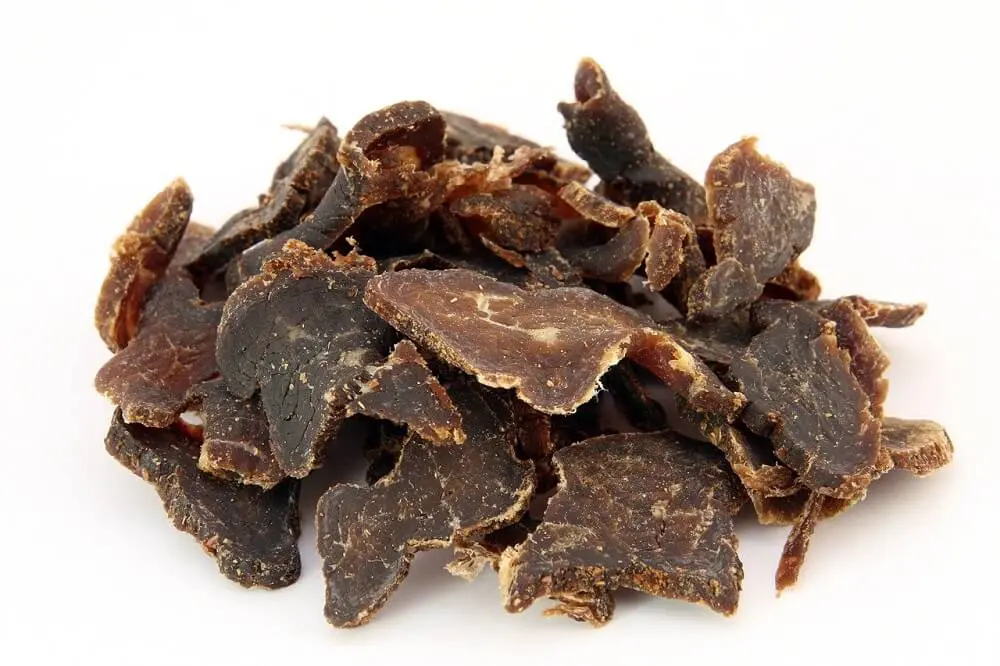
Getting Started
The first thing you will need to start making your jerky is a lean piece of beef or other meat of your choice. The best option is to go to a butcher who ensures the meat is as lean as possible. This is because any fat left on the jerky will ruin the shelf life, making it a pretty useless survival food. Once you have the meat, you should put it into your freezer for an hour or two. This firms it up and makes it easier to cut into strips when it’s time to make the jerky.
Cut The Meat Into Strips
When you make jerky, the meat shrinks to around a third of its original size as it dries out. There’s a fine art to cutting the meat into strips as you don’t want them to be too thin or too thick either. Each piece should be around an eighth of an inch. During the slicing, you should also check for any excess fat that may have been missed and remove it. Jerky shouldn’t have any fat on it at all, so remove as much as possible.
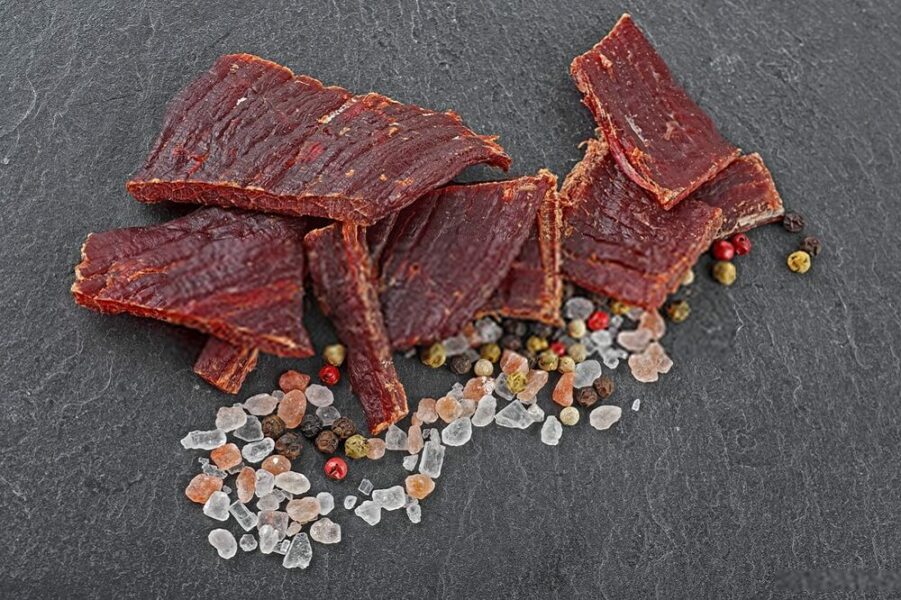
Making A Marinade
There’s a list of very simple ingredients you need to make a marinade for your jerky, which includes:
- 1 cup of soy sauce
- One teaspoon of garlic powder
- 1 cup of Worchester sauce
- One teaspoon of onion powder
Once you’ve got all of these ingredients together, put them into a large bowl along with your sliced meat, and then cover it. Place the bowl in your refrigerator for the night. When you take the bowl back out of the fridge, get a paper towel, and take as much of the marinade off the slices of meat as you can. This will speed up the drying process of the jerky.
Drying The Jerky
The best beef jerky is dried out in an old-fashioned way. Forget your dehydrators and other modern methods. Get your slices of meat and place them on your oven racks. It’s okay if they’re touching, make sure they’re not overlapping. Put some foil on the bottom of your oven so that the meat doesn’t drip and make a mess as it dries.
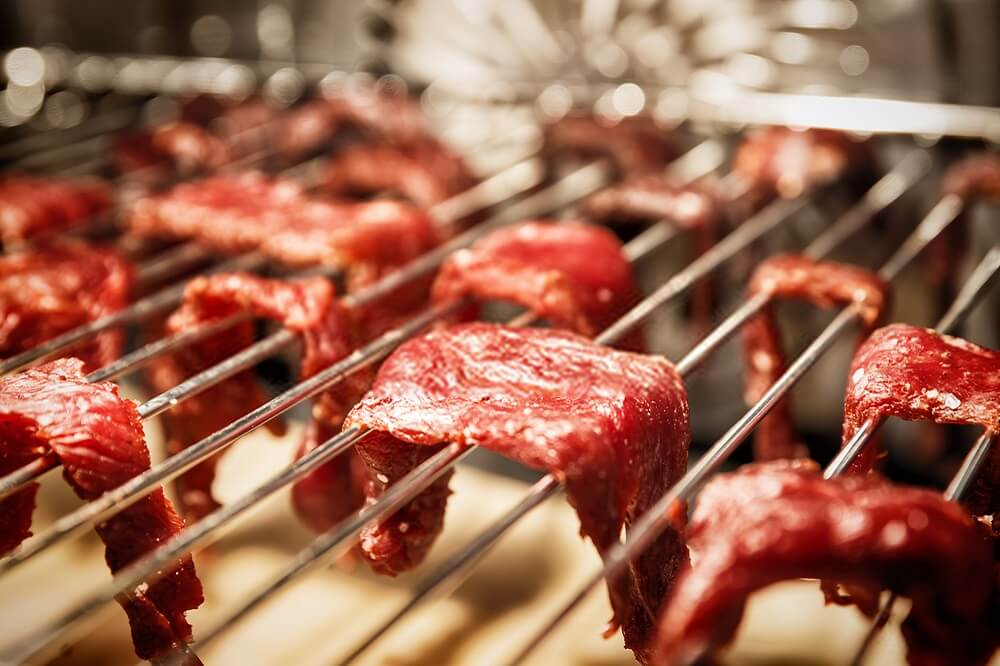
Now that you’ve got your meat in the oven, you want to turn the heat to around 180 degrees. An important part here is to leave the door open partially so that heat and moisture can escape. The aim is to dry the meat out – you don’t want to cook it.
The whole drying process in the oven can take several hours. There isn’t a set time limit on this because it all depends on how hot your oven is and how thick the meat is. It would be best if you kept an eye on it during the drying, though.
When you take a slice of meat from the oven and can bend it slightly or tear it apart easily, and the meat is dry when you touch it, then you’ve successfully made jerky. Dehydrators do the very same thing like this, but these can be costly, and if you don’t have one, using the old-fashioned method is the ideal way of doing it.
Smoking Jerky
If you don’t have access to an oven and need to make jerky out in the wild, you may want to try smoking the meat over a fire instead. Ancient cultures used this method along with air and heat to dry out their meats so that they could be kept for longer. Using this more ancient and natural method could help you out in a tricky situation too.
In Ancient Egypt, they used to lay their meat out on hot rocks in the sun until it went hard. Native Americans had a similar method of placing the meat over a fire until it set. Smoke dries the meat out naturally and can add some extra flavor to it as well.
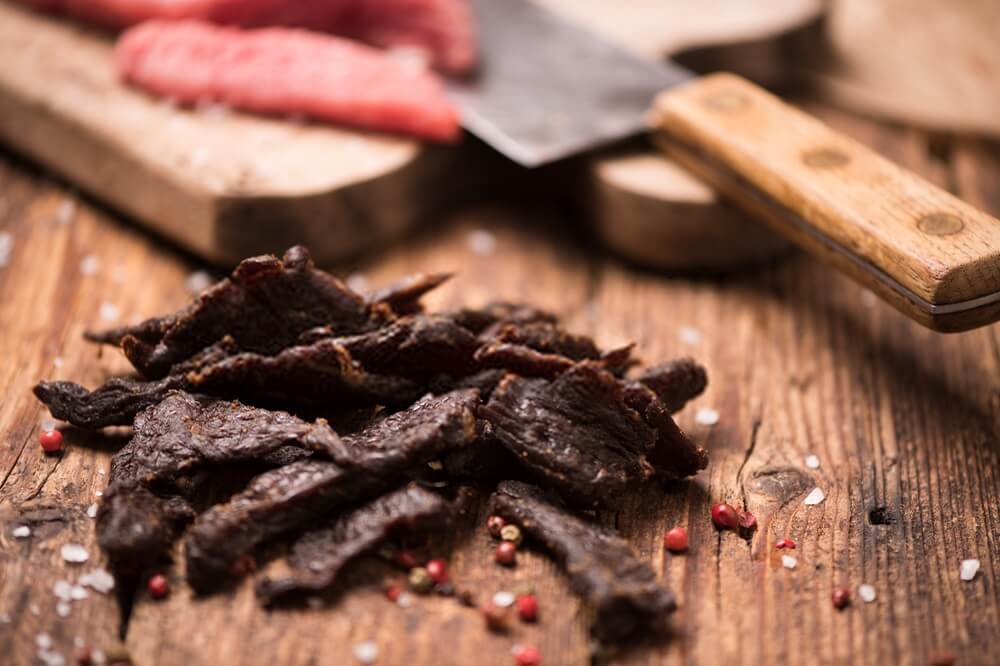
If you plan on smoking the meat to create your jerky, be prepared to take a few days for it to work. You will need to set up a smoking box and then place this on top of your fire pit. The wood you choose for your fire also matters. Wood, such as alder, is better for smoking. It produces a lot of smoke as opposed to heat, which can help to smoke the meat a lot quicker.
The trick to smoking your jerky is to produce fire with as little flame as possible. You only want a bed of coals where the wood is smoldering rather than a high-burning flame, which could cook the meat instead.
Frames such as the ones you use for smoking can also be made for air-drying meat. A lot of different meats can be made into jerky, but it’s recommended that you don’t try to dry out poultry or fowl as it does carry the risk of food poisoning.
Benefits Of Jerky As A Survival Food
Jerky has a lot of benefits as survival food. Let’s take a look at some of them below.
- Low in fat and calories – While something high in fat and calories can be beneficial in a survival situation, jerky is low enough that you can snack on it all day and not overdo it. When you dry the meat out, the fat drips off, meaning the jerky left behind is much better for you.
- High in protein – Homemade beef jerky can carry up to 10 grams of protein. This is an essential nutrient you will need in bucketloads during any survival situation. Protein gives you the strength to keep moving and living.
- Portable and convenient – Jerky is small enough to carry as part of your survival pack. Once you’ve made it, it’s an easy-to-grab snack that can be taken wherever you need it most. The long shelf life also makes it perfect for survival situations. Even if you’re not, this jerky can be taken with you hiking or camping as a quick bite when feeling peckish.
- It’s filling – Food in survival situations should be dense in nutrients so that they fill you up for longer. This is exactly what jerky does. It’s also a great food for burning off body fat if you want to lose a little weight.
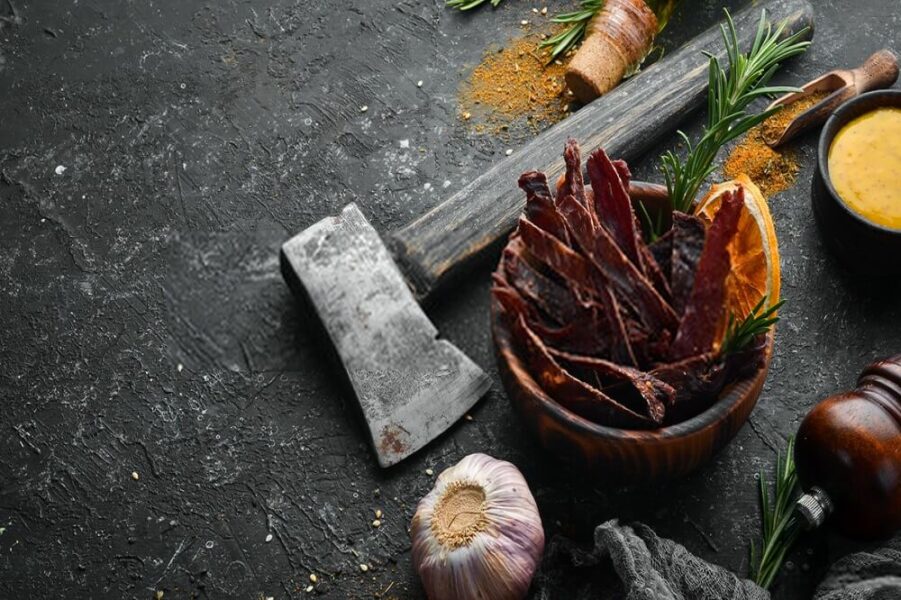
Other Superb Survival Foods
There are quite a few food items that people aren’t aware of that can outlast any apocalypse. Let’s look at some other foodstuffs if jerky doesn’t float your boat.
- Honey – Honey has quickly become an essential survival food. Many people think that when it goes into crystals, it’s time to throw it away. This isn’t the case at all, which makes it perfect for survival. Warming the honey up and stirring it will make the solid crystals disappear. Honey is definitely a food you want to stock up on for survival.
- Salt – Where would we be without salt? Even in a life-or-death situation, your body still needs salt to survive. Salt doesn’t have an expiry date, which means its shelf life is infinite. If you don’t already have this vital seasoning as part of your survival kit, it’s time to stock up.
- Rice – One of the main foods you will find in any survivalist bunker is rice. It’s a great one to stock up on if you have enough space to store it. Rice is filling and can be used with a lot of different recipes to create tasty meals. The shelf life is long if you keep pests and critters away from it. It’s important to remember that it is white rice with a long shelf life. Other products like brown rice contain oils, which makes the food go rancid after a certain amount of time.
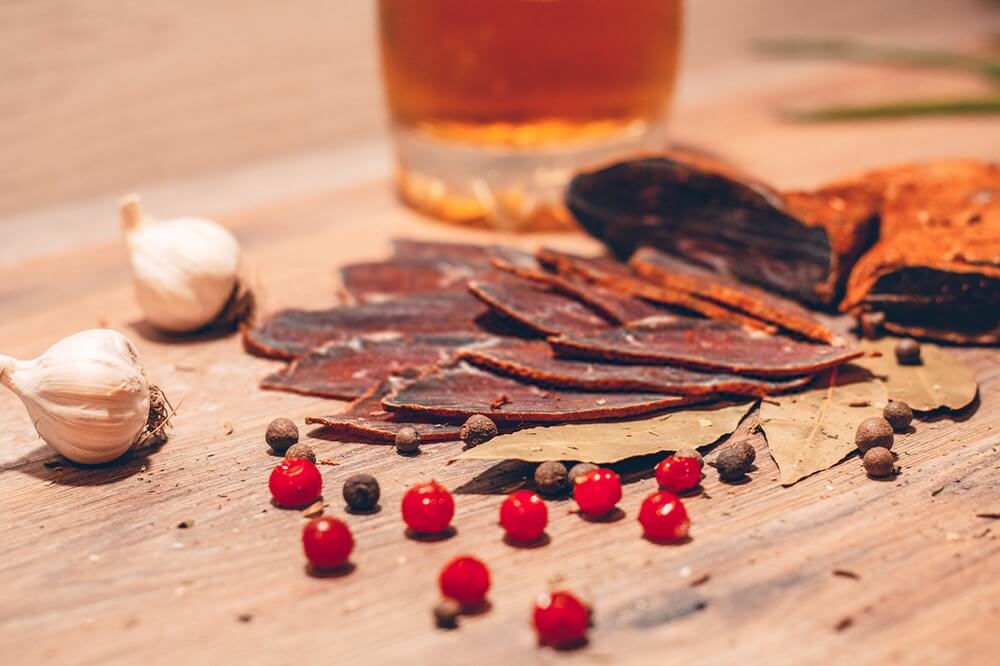
Final Words
The process of making your own beef jerky is really simple, even if you don’t have a dehydrator. It takes a little bit of time to prepare and needs monitoring throughout, but once you’ve made it a few times, the whole thing becomes easy. I hope this inspires you to make your own survival food so you will never be stuck without something to eat when SHTF.


